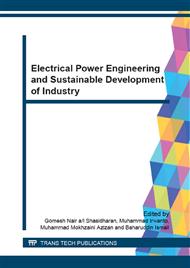p.425
p.430
p.435
p.440
p.445
p.450
p.457
p.462
p.467
Forced Convective Heat Transfer of Ionic Wind on Different Surface Conditions
Abstract:
The heat transfer enhancement of the forced convection due to ionic wind over different surface conditions including a smooth, rough ruface and a source array of rectangular blocks surface (representing electronic components) was studied. Under laminar flow, the highest heat transfer rate of 0.0736 W/m2.K per minute was observed for the source array surface. The average heat transfer coefficient during steady state of ionic cooling on smooth, rough and source array surfaces were observed to be 19.144 W/m2.K, 18.736 W/m2.K and 21.126 W/m2.K respectively. The heat transfer properties of ionic wind are similar to moving air, generating high heat transfer coefficient and Nusselt number on source array surface due to recirculation eddies.
Info:
Periodical:
Pages:
445-449
Citation:
Online since:
September 2015
Authors:
Keywords:
Price:
Сopyright:
© 2015 Trans Tech Publications Ltd. All Rights Reserved
Share:
Citation:


